INDOOR SAUNA VS STEAM ROOM:
PROS AND CONS
If you’ve been considering installing the therapeutic luxury of a small indoor sauna in your home, you are probably well into the research stage. If so, you might be wondering what type you should buy, and you’ll be curious about what exactly makes a sauna and a steam room so different from one another.
The sauna packs all the heat but delivers lower humidity, while the steam room combines a lower temperature with a very high level of humidity.
While saunas and steam rooms share many similar benefits, one of these options is less expensive to own and offers more customization options. To give you a transparent idea of the important differences between the two, we have put together this article on small indoor saunas vs steam rooms, and the pros and cons of each.
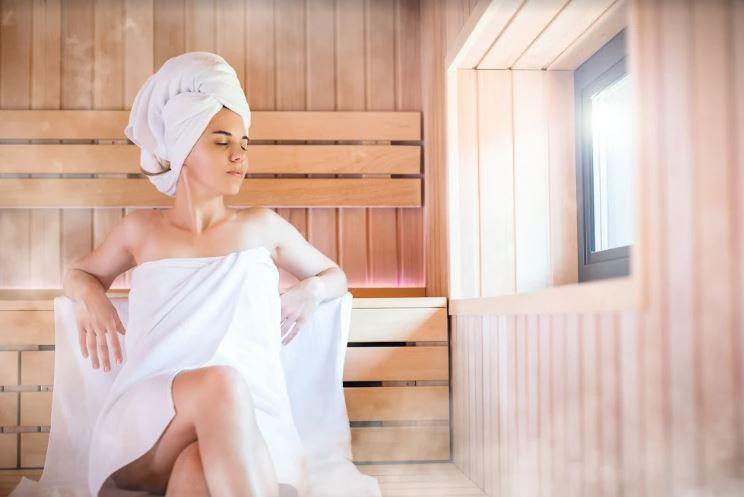
THE DIFFERENCES BETWEEN A SMALL INDOOR SAUNA AND A STEAM ROOM
While a traditional sauna can be turned into a steam room of sorts, small indoor saunas and steam rooms have a multitude of differences between them, and each provides a different type of heat. Here are the specifics on how they differ:
WHAT IS A SAUNA?
Saunas produce a dry heat and a low level of humidity. Traditional saunas usually operate at a temperature of around 180 - 195 degrees Fahrenheit, and are heated by a sauna heater and sauna rocks. Water can be sprinkled on the sauna rocks to produce steam and create a steam room experience, but the temperature will still be much higher than that of an actual steam room. An excellent example of an indoor traditional sauna is the Almost Heaven Logan 1-Person Indoor Sauna.

Infrared saunas, like the Golden Designs 2-Person Full Spectrum Sauna, are a more modern alternative to the traditional sauna or steam room, which use infrared heat rays to directly heat the body and increase core temperature without the space itself needing to be heated. These saunas operate at between 120 and 140 degrees Fahrenheit.
It is possible to buy hybrid saunas that incorporate both the traditional and infrared heating options into one design - the Almost Heaven Hampton 2-Person Hybrid Sauna is a great example of this sauna type.
WHAT IS A STEAM ROOM?
Traditional steam rooms are wet rooms that use generators and boiling water to make plenty of steam. This means that they give off lots of humidity, often producing as much as 100%, just like in the Roman and Turkish bath houses of old. Historically, bath houses were used by ancient civilizations as a way to rid themselves of the dust and dirt of daily life and keep themselves healthy, though it is unlikely that they would have understood why that worked.

The temperature in a steam room is quite low in comparison to saunas - usually 100 to 120 degrees Fahrenheit, and for some people, the lower temperature and higher humidity is exactly what they enjoy about the steam room experience. Luckily, in this day and age, we don’t need to attend crowded bath houses to enjoy this luxury - we can simply install a steam room in our own homes with modern technologies such as the SteamCore Pro-Series by Saunacore, or any number of other steam shower options.
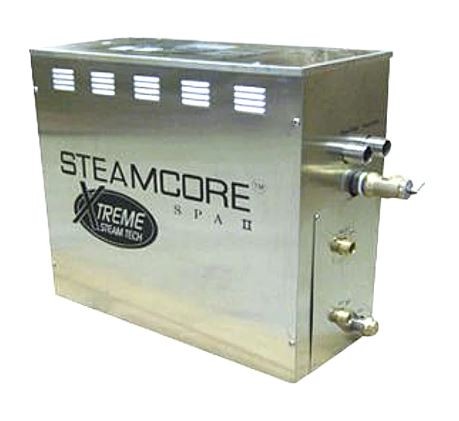
HEALTH BENEFITS OF SAUNAS & STEAM ROOMS
Saunas and steam rooms both provide many similar health benefits. The list of advantages is extensive, and some are more specific to one or the other, but here are a few ways your body will benefit from either option:
BETTER CIRCULATION
Your cardiovascular system will benefit from either the sauna or the steam room. Not only will your blood circulation improve, but you will also find that you have lower blood pressure after a session. The health of your heart will improve, and any broken skin tissue will heal faster, as well.
LOWER BLOOD PRESSURE
While you are relaxing in either a steam room or a sauna, your body releases a hormone called aldosterone, which helps with regulating your blood pressure. As you bask in therapeutic bliss, your blood pressure will decrease, which is why your body feels so relaxed afterwards.
LESS CONGESTION
During a relaxing session in a sauna or steam room, the heat raises the temperature of your mucous membrane, which will allow you to breathe deeper and easier. If you are prone to sinus or lung congestion, heat therapy is a perfect treatment option, and countless studies show that respiratory infections heal quicker when treated with steam.
IMPROVED SKIN HEALTH
As we go about our daily lives, we expose our skin to all manner of toxins and dirt, and along with the skin cells we shed, these get trapped under the dermis, causing skin inflammation and breakouts. As you begin to sweat during your session in the sauna or steam room, your pores will open, allowing the dirt and toxins to be flushed away, and clearing your skin.
THE PROS AND CONS
While both the steam room and the sauna do plenty to boost your body’s health in incredible ways, they also each host a set of benefits that are unique to themselves. Here is a more in-depth look at the pros and cons of each.
PROS OF THE SAUNA
-
Maintenance of a home sauna is much easier than maintenance of a steam room. Saunas require only a regular wipe down and a little bit of care when entering.
-
Installation of a home sauna is quick and painless, as the only requirement is an electrical outlet and a bit of clear space in your home.
-
If you are sensitive to humidity, the indoor sauna is a better choice. Whether you choose a traditional or an infrared sauna, you will be exposed to much less humidity than you would in a steam room. Although the traditional sauna can be used as a steam room, that is entirely by choice and can be completely ignored.

CONS OF THE SAUNA
-
No matter where you choose to put it, a home sauna will take up some of your interior space. For people living in smaller houses this could make an indoor sauna a difficult option. In the unlikely event that you have a small home in a large garden, there are a wonderful selection of outdoor saunas, like the Dundalk LeisureCraft range, to choose from.
-
Saunas should not be used by children or pregnant women, due to the high temperatures. Children can not regulate their body temperatures well enough to handle the heat, and the higher temperatures could cause complications in pregnancy. Also, if used for too long, saunas could cause short-term infertility in men.
-
For people who are sensitive to heat, a sauna may be quite uncomfortable. In this case, the person should make their decision based on whether they prefer the steam or the dry sauna, and based on that decision, choose either a steam room or an infrared sauna.
PROS OF THE STEAM ROOM
-
This is one of the better options if you suffer from heat sensitivity, because the humidity makes your body feel hotter, causing you to perspire, even though the temperature is cooler in comparison to the traditional sauna.
-
Steam rooms work very well for cleaning out the pores through perspiration. Due to the high moisture content in the air and the excess perspiration, more toxins and dirt are eliminated than in a dry sauna.
-
This option is excellent for treating dry skin, also due to the higher moisture content in the air. Your skin will be exposed to the clean water condensed in the air, rather than just your own perspiration, leaving the skin clean and clear after your session.
CONS OF THE STEAM ROOM
-
Spending more than 15 minutes in a steam room can cause dehydration due to the high level of perspiration. Because of the high moisture content in the air, it may be more difficult to notice the signs of dehydration, or to remember to increase your water intake.
-
If not properly sanitized, steam rooms can hold a lot of bacteria. The temperature in a steam room is not high enough to kill germs, and in fact, germs and bacteria might increase due to the heat. A lot of maintenance and cleaning is required to prevent this.
-
People who have heart disease or low blood pressure should not use steam rooms, as they can cause the heart rate to rise to an unsafe level, or cause people with low blood pressure to feel faint and weak.
WHICH IS BETTER - SAUNA OR STEAM ROOM?
While the sauna and the steam room share many of the same health benefits, the indoor sauna is generally a better option for your home. There are 3 main reasons for this statement, and for why an indoor sauna will benefit you more in the long run:
-
If you choose to install a sauna in your home, the regular maintenance and upkeep it will require are simple and easy. Steam rooms require more attention, more cleaning, and more installation work.
-
While saunas can aid in killing viruses, the temperature in a steam room is not hot enough for this. Steam rooms can be highly unsanitary if not properly cleaned and maintained.
-
Small indoor sauna kits are significantly more affordable than installing a steam room in your home. They require just a quick, once-off placement and an electrical outlet, while a steam room requires an entire room of your house to be converted into a wet room, over and above the cost of the steam shower unit. Some indoor saunas, like the Auroom Baia Cabin Sauna, are very cost effective to run, too, making them well worth the installation cost.
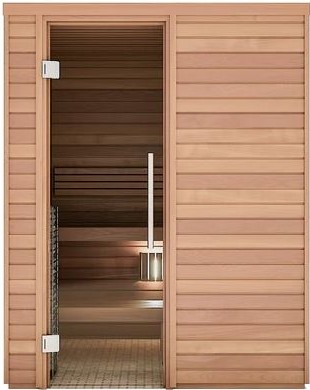
SIGN UP. SAVE BIG.
Subscribe to be the first to know about our special monthly sauna sales, sent right to your inbox.
SUMMARY
Saunas and steam rooms both offer many health benefits, but there are a number of key differences between them, as well. If you choose a traditional sauna for your home, you will still have the option of creating bursts of steam by sprinkling water onto the hot sauna rocks. Otherwise, you can directly heat your body with the use of an infrared sauna. If you can’t decide between the two, you can simply enjoy the luxury of both by choosing a hybrid sauna.
Steam baths can carry lots of germs, while maintaining a sauna after each therapeutic session is as simple as wiping it down with warm water and a soft cloth. Having a sauna in your home can help you to detox your body from harmful chemicals, while also improving your blood circulation, stress levels, and respiratory health. Take a few minutes to browse through our selection, and read about the variety of indoor sauna models to find the one that is a perfect fit for your needs.

About the Author
Adam Fromson
Adam Fromson, co-founder of My Sauna World, loves saunas and their transformative health benefits. With years of experience exploring sauna culture and its impact on health and wellness, Adam is passionate about helping others discover the life-changing benefits of saunas for themselves.
Let customers speak for us
from 384 reviews
Good communication, easy delivery, easy set up, easy operation, great value. Recommended!
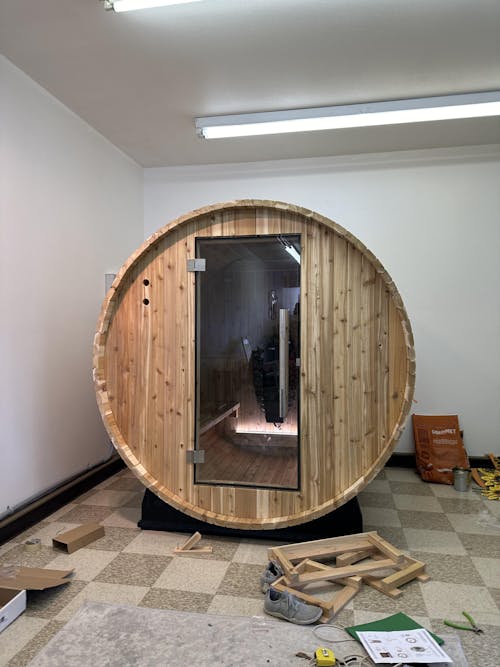
We ordered the 4 person barrel sauna and love it! We wanted a little extra space for the 2 of us/guests and it’s great. We could definitely fit 4 people in it if we needed. We use it every single day. It took about 10 weeks to get here because they build it specifically for the order. Putting the barrel together was fairly easy with 2 people. The electrical and the heater definitely required an electrician to install as we could have not done it alone.
We ordered the biggest heater (harvia spirit 8kw) and it heats up the sauna in about 15 mins inside our 40-50° garage. Overall this style of sauna is hotter and you sweat a lot faster than in an infrared sauna. I truly 10/10 recommend!
Pic is of us in the middle of building it.
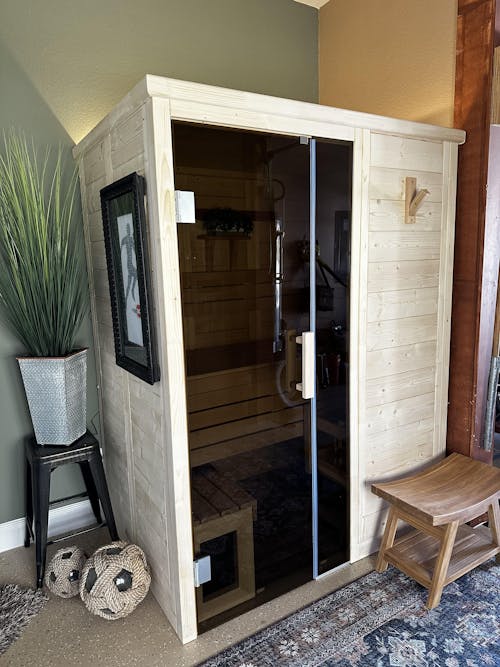
Took me about 6 hours over 2 evenings to assemble almost all by myself. Had a pro run a new circuit from my panel. Very well made and assembly was straightforward. Heater is well sized and reaches operating temperature in under 30 minutes.

Great sauna very easy to assemble

The salt panel was a great addition to our Madison Sauna. It has excellent grain which is accented by the amazing color lights that glow through the panel. Also when you hit the rocks with a splash of water you can feel the heat bounce off the panel. Great addition if you are considering this option.
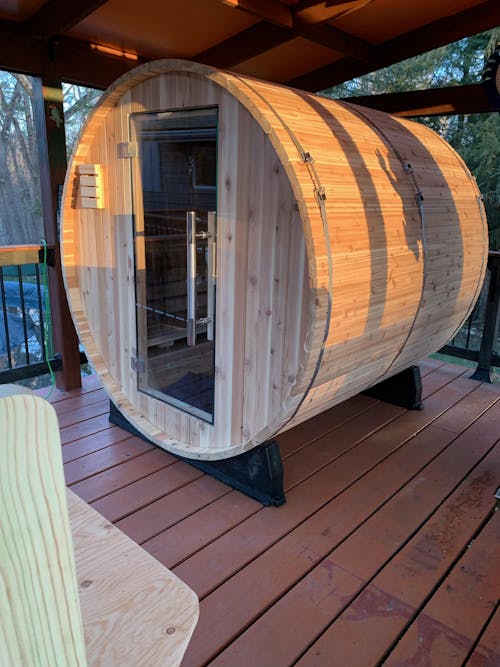
We can say enough about Sauna World there customer support is great! Our Pinnacle Sauna from Almost Heaven is epic.

The finish and quality is outstanding and it was quick and easy to assemble.
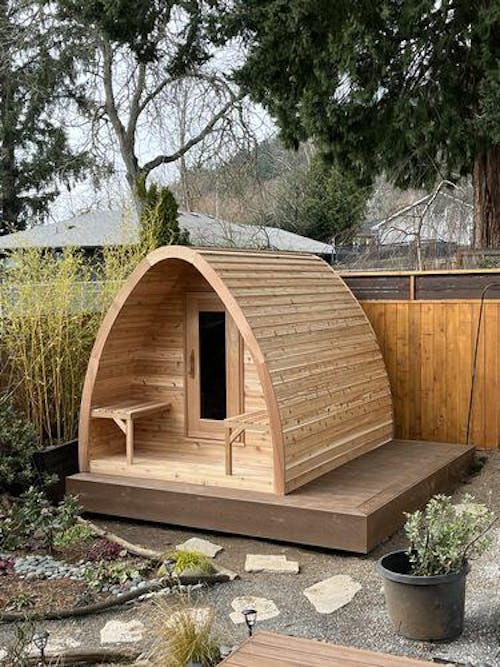
We are thrilled with our mini pod!! It came well shipped and our friend assembled it in 11 hours! Wow! We cannot wait to get healthy and sauna it up!

Beautiful sauna!!! Much easier than I expected to assemble, took a total of 4 hours. Can't wait to get warm by the pool on those cool evenings. Customer service was excellent..

Purchased a 2 person Almost Heaven barrel sauna and were delighted with the product. The order process was quick and easy, the sauna arrived on-time, installation was simple, following the provided instructions, and the sauna is extremely high quality. We’ve used it daily for over 2 weeks and quite frankly I don’t know how we lived without it. If I had it to do over again I wouldn’t change a thing... except maybe purchasing a 4 person model to easier share with friends!

Great Customer Service and a breeze to put together.Excellent shipping and the Sauna is top notch, couldn’t be happier






























